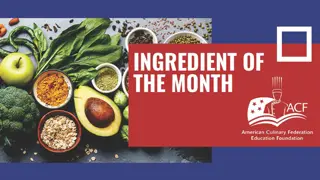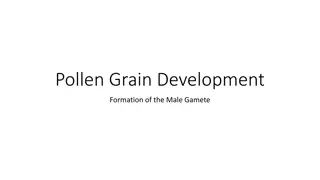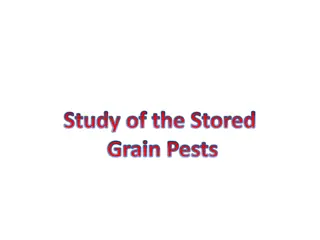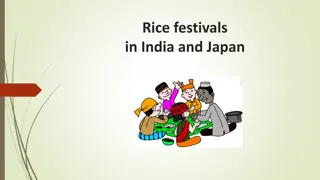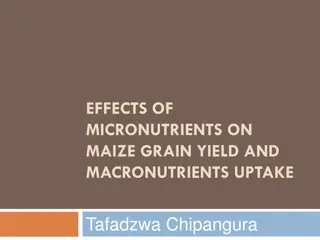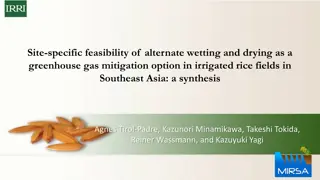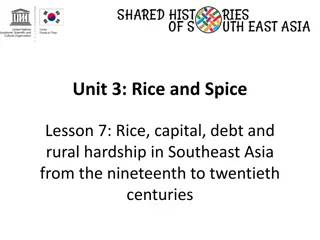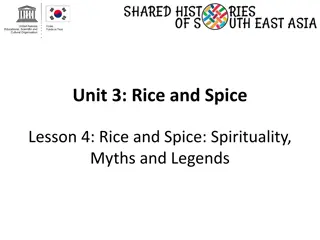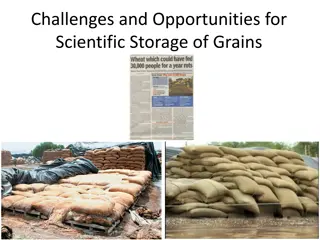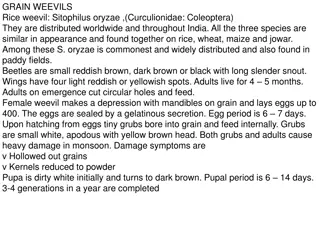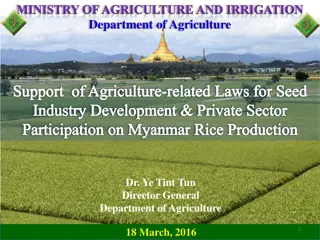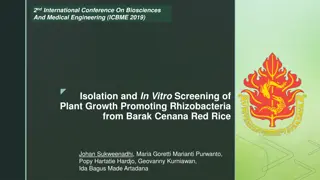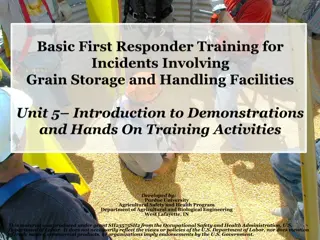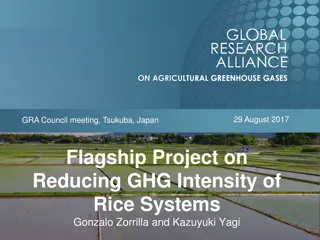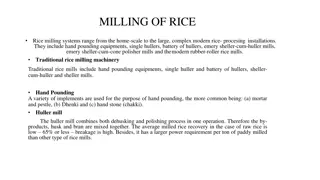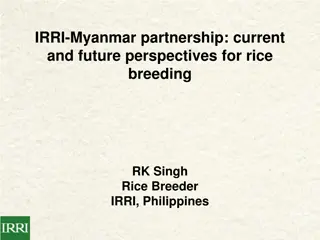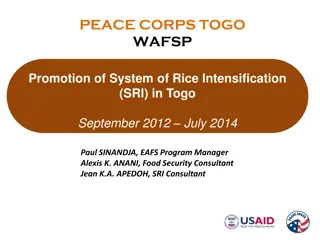Understanding the Anatomy of a Rice Grain
The anatomy of a rice grain consists of the hull, pericarp, testa, and bran layers, each serving a unique purpose in protecting the seed and providing essential nutrients. The hull, pericarp, and bran are successively removed during the milling process, impacting the nutritional content of the final rice product. Silica presence in the hull can pose challenges in processing equipment due to excessive wear. Parboiling before milling helps retain nutrients in the rice grain.
Download Presentation

Please find below an Image/Link to download the presentation.
The content on the website is provided AS IS for your information and personal use only. It may not be sold, licensed, or shared on other websites without obtaining consent from the author. Download presentation by click this link. If you encounter any issues during the download, it is possible that the publisher has removed the file from their server.
E N D
Presentation Transcript
The most visible part or a rough rice grain is the husk. This is also known as the hull. This is formed from the two leaves o the spikelet namely the palea covering the ventral part of the seed and the lemma covering the dorsal portion. Both parts are longitudinally joined together by an interlocking fold. This fold is a weak point in the hull and easily breaks up when a twisting force is applied to the grain. The upper end of the two hull sections transfer into the apiculus sections and finall At the lower part, where the grain is fixed on the panicle is a tiny leaf-shaped part called the sterile lemma and then the rachilla. Normally the panicle breaks off during threshing, however a small part of the pedicel frequently remains attached to the grain. The husk is formed mostly of cellulosic and fubrous tissue and is covered with very hard glass spines or trichomes. The present of this make the husk abrasive and very hard thus, they give the grain a good protection microrganism, moisture and gases The caloric value to the hulls Is rather high and ranges from 3000 to 3500 kcal/kg making hulls an important source of However, the most disturbing presence in rice hull is high proportion of silica which causes considerable damage to processing equipment through excessive wear of machine parts and interconnecting transfer facilities.
THE PERICARP When the hull is removed, a thin fibrous laver can be seen This is called the pericarp, frequently known as the silverskin . The layer is usually translucent or greyish in color. When the pericarp is not translucent, but reddish in the gain is referred to as red rice. It is considered as an integral part of the brown rice kernel (caryopsis) but is easily removed in the or whitening process. The main function of this layer is to serve as an additional protective layer against molds and quality deterioration through oxidation and enzymes due to the movements of oxygen, carbon dioxide and water vapor. The pericarp actually consists or 3 layers namely epicarp, mesocarp & cross layer. Immediately under the pericarp layer is the testa or sometimes called tegmen layer which is only a few cells in thickness but with less fibrous than pericrap layer. This layer is rich in oil and protein but its starch content is very low. Sometimes this layer is considered as part of the seed coat but because of its oil content, it is normally considered as the outermost layer of the bran.
Immediately under the testa or tegmen layer is the bran layer or aleurone layer. This part is the main constiturent removed in the whitening stage during milling. It has a very low starch content but has a high percentage of oil, protein, vitamins and minerals. Because of its high oil, content, the bran is easily affected by oxidation when the oxygen in the air comes in contact with In the milling process, the higher milling degree indicates a greater percentage of bran removed. shows the degree of milling as determined by the quantity of the outer layer removed from the brown rice kernels. When rice is fully milled the vitamins (a complex), protein, mineral, and oil contents are lessened. This explains why persons with beri-beri (Vitamin A deficiency) are advised to eat brown rice. This also probably explains why persons who eat well milled rice are prone to be protein difficient or even malnourished. Thus, it is not surprising that some dieticians recommend the eating of regularly milled or even undermilled rice. In the processing Industry, the vitamins in the grain can be retained by parboiling before milling. This allows the movement of nutrients from the bran layer to the inner part of the grain thus, making the vitamins available in the milled rice.
The embryo is located at central bottom portion of the grain, where the grain has been attached to the panicle of the rice plant . This is the living organism in the grain which develops into a new plant. The embryo respires by taking in oxygen in the air, consumes food which comes from the starch in the grain itself while simultaneously releasing moisture and heat. This explains why grains during storage have the tendency to decrease in weight as a result of the loss in moisture and dry matter content in the endosperm. During milling, the embryo is removed resulting in an indented shape at one end of the milled rice grain.
When the husk, the pericarp, the bran and the embryo are removed, what remains is the endosperm. It mainly consists of starch with only a small concentration of protein and hardly any minerals, vitamins or oil. Because of its high percentage of carbohydrates, its energy value is high. In the central core of the grain the starchy cells are somewhat hexagonal in shape, but between the centre and outside they are elongated with the long walls radiating outwards from the centre.





